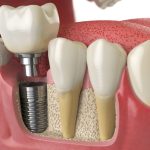Mandibular osteotomy is a surgical procedure performed on your lower jaw to correct an imbalance of alignment. It is usually carried out when your lower jaw, which includes your entire dental arch and chin, protrudes or recedes significantly in comparison to your upper jaw.
This operation is often proceeded by orthodontic treatment and can be paired with a Le Fort I maxillary (upper jaw) osteotomy. When these two procedures are performed together, this is known as a bimaxillary osteotomy.
Our specialists at Clinique MFML explain everything you need to know about this type of orthognathic surgery.
Why is Mandibular Osteotomy done?
There are many benefits to performing a mandibular osteotomy. These include:
- The surgery fixes unhealthy chewing, speaking and swallowing processes, which lowers the risk of future dental or jaw problems.
- It also rebalances any upper and lower jaw misalignment, correcting mostly a class 2 malocclusion or a class 3 malocclusion.
- It can further treat facial asymmetry and enhance the appearance of the face, both from the front and the side angles.
Mandibular osteotomy is aesthetically and functionally beneficial. It essentially corrects overbites and underbites.
Who needs mandibular osteotomy?
This surgical procedure is recommended for people who suffer from a misalignment between their upper and lower jaws that is too large to be corrected with simple orthodontic treatment.
Mandibular osteotomy can correct a jaw that is too far forwards, backwards, or offset to one side, as well as repair more complex cases such as a jaw with a gap in the middle.
What does lower jaw surgery involve?
A mandibular osteotomy is performed under general anaesthesia as opposed to intravenous sedation used in many other maxillofacial procedures. Therefore, a preoperative visit and hospitalization are required. Prior to this procedure, patients always receive orthodontic preparation treatment in order to give their teeth “normal” axes. This orthodontic treatment usually last between 6 to 18 months.
During the operation, an incision is made inside the mouth at the gum line. No scar is visible after the operation.
Two incisions are made, one on each side of the jaw. This is needed to separate the lower dental arch from the rest of the jaw without harming the soft tissues (especially the lower alveolar nerve). This enables the surgeon to reposition the lower jaw into a more ideal position, either by moving it forwards, backwards, or recentering it according to the orthodontist’s treatment plan.
To secure everything together, screws and plates are used. This process is called osteosynthesis. They are inserted underneath the gum and are generally kept for life. Absorbable sutures are then used to stitch the gum back into place.
To help maintain the new jaw position, elastic bands are placed around the patient’s orthodontic braces, which must be kept in place continuously for the first few days post-surgery.
If desired, a genioplasty, maxillary osteotomy, or a wisdom tooth extraction can also be combined with the mandibular osteotomy procedure.
What are the risks?
A mandibular osteotomy is a standardized procedure where the risks are rare and limited.
The main risk is developing a sensitive lower jaw, lip and chin, but this can only occur if the inferior alveolar nerve gets damaged. With ultrasonic piezosurgery being extremely accurate technology, this is very unlikely to happen.
There is also a risk of fracture if there are still impacted or partially impacted wisdom teeth, which should have been removed at least 6 months before the operation.
Finally, the screws and plates can sometimes cause discomfort, in which case they would be removed after the first year.
Post-operation guidance
After a mandibular osteotomy, maxillofacial surgeons will recommend several post-surgical treatments, including:
- Mouthwash
- Painkillers
- Anti-inflammatory medication if necessary
- Antibiotics if necessary
- Putting ice on the cheeks in the 24 hours post-operation to reduce pain and prevent swelling
- A liquid diet for the first few days, then a soft diet if you no longer feel a jaw lock (this lock sensation usually lasts a few days, but can be longer depending on the case)
- Smoking is also one of the things to avoid after dental surgery. For more information, visit our postoperative instructions page.
In the days following the operation, you could experience various symptoms, including:
- Light bleeding around the stitches
- Pain in the operated areas
- An often pronounced oedema (swelling)
- Limitation of mouth opening
Contact Clinique MFML for mandibular osteotomy enquiries
A mandibular osteotomy is always performed by an experienced maxillofacial surgeon.
The Clinique MFML team will accompany you throughout your surgery and hospitalization, helping you to regain your smile. Contact us today to discuss your next steps with our specialists.




